
The Quasi-War was an undeclared naval war fought from 1798 to 1800 between the United States and the French First Republic, primarily in the Caribbean and off the East Coast of the United States. The ability of Congress to authorize military action without a formal declaration of war was later confirmed by the Supreme Court and formed the basis of many similar actions since, including American participation in the Vietnam War and 1990 Gulf War.
USS Baltimore may refer to:
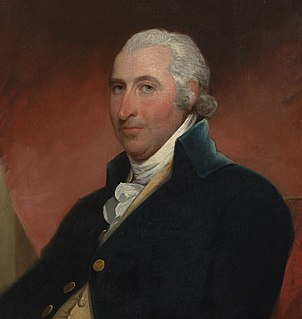
John Shaw was an Irish-born American offcer in the United States Navy.
USS Intrepid may refer to:
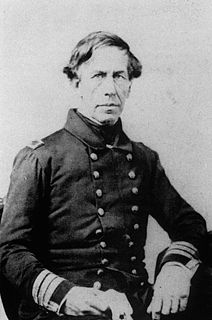
Charles Wilkes was an American naval officer, ship's captain, and explorer. He led the United States Exploring Expedition, 1838–1842. His behavior led to two convictions by court-martial, one stemming from the massacre of almost 80 Fijians on Malolo in 1840. During the American Civil War (1861–1865) he commanded USS San Jacinto during the Trent Affair, where he stopped a Royal Mail Ship and removed two Confederate diplomats, which almost led to war between the US and the UK.

Charles Stewart was an officer in the United States Navy who commanded a number of US Navy ships, including USS Constitution. He saw service during the Quasi War and both Barbary Wars in the Mediterranean along North Africa and the War of 1812. He later commanded the navy yard in Philadelphia and was promoted to become the Navy's first flag officer shortly before retiring. He was promoted to rear admiral after he retired from the Navy. He lived a long life and was the last surviving Navy captain who had served in the War of 1812.
The first USS Montezuma was a merchant ship built in Virginia in 1795. United States Navy acquired her during the Quasi-War with France and retained her name.
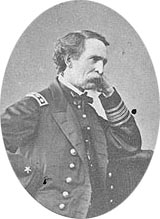
Rear Admiral Alexander Murray was a flag officer in the United States Navy, who served during the Mexican–American War and the American Civil War.
The first USS Norfolk was a brig in the United States Navy during the Quasi-War with France.
USS Retaliation was the French privateer Croyable, built in Maryland, that then operated out of Santo Domingo. Delaware captured her on 7 July 1798 off New Jersey. She then served in the United States Navy during Quasi-War with France. Two French frigates recaptured her on 20 November 1798. The French Navy took her into service as Magicienne. However, Merrimack captured her on 28 June 1799. She served in the US Navy in the Caribbean briefly, before arriving in Philadelphia in August. She was paid off there and sold on 29 November.
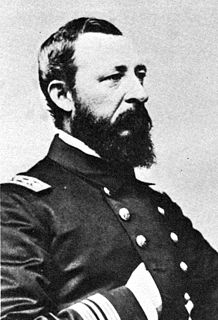
Daniel Ammen was a U.S. naval officer during the American Civil War and the postbellum period, as well as a prolific author. His last assignment in the Navy was Chief of the Bureau of Navigation.
Ten ships of the Royal Navy have been named HMS Royalist:
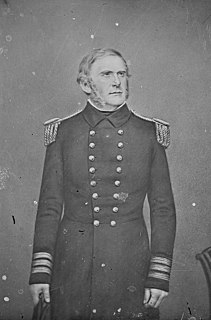
Commodore Garrett Jesse Pendergrast was an officer in the United States Navy, who served at the beginning of the American Civil War.

The Mediterranean Squadron, also known as the Mediterranean Station, was part of the United States Navy in the 19th century that operated in the Mediterranean Sea. It was formed in response to the First and Second Barbary Wars. Between 1801 and 1818, the squadron was composed of a series of rotating squadrons. Later, squadrons were sent in the 1820s to the 1860s to suppress piracy, primarily in Greece and to engage in gunboat diplomacy. In 1865 the force was renamed the European Squadron.
Four ships of the Royal Navy have been named HMS Louisa:
Numerous ships have sailed under the name Antelope. Notable ones include:
Montezuma was launched in Philadelphia in 1822 as a packet ship. In 1841 her owner sold her and she became a whaler operating out of New London, Connecticut. Between 1841 and 1861 she made six voyages to the Indian Ocean, the Pacific, and the Bering Sea. Late in 1861, during the American Civil War, the USS Navy purchased her to sink her in January 1862 as a harbour obstruction.
Several ships have been named Hermes for Hermes:
Several vessels have been named Lynx for the lynx:
This page is based on this
Wikipedia article Text is available under the
CC BY-SA 4.0 license; additional terms may apply.
Images, videos and audio are available under their respective licenses.







